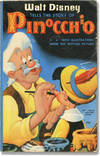
A Study of Industrial Fluctuation. An enquiry into the character and causes of the so-called cyclical movements of trade.
by ROBERTSON, Dennis Holme
- Used
- Hardcover
- first
- Condition
- See description
- Seller
-
London, United Kingdom
Payment Methods Accepted
About This Item
London: P. S. King,, 1915. First edition of Robertson's dissertation, published after research and a fellowship at Trinity College, Cambridge; from the library of William Beveridge. Robertson is known chiefly for his contributions to the study of the relationship between money, the trade cycle, and economic growth. 'In the Study of Industrial Fluctuation, he used historical evidence to argue that economic cycles had real (that is, related to investment and savings) as opposed to monetary or psychological causes and that some degree of fluctuation was a necessary part of the growth process. It was a thesis that challenged orthodox thinking in Britain and established Robertson as a possible precursor of real business cycle theory' (ODNB). Dennis Holme Robertson (1890-1963) made his most important contribution to economics in the fields of monetary theory and industrial fluctuation. He attended Trinity College, Cambridge, in 1908, initially to study classics, but then changed to economics in 1910. Robertson became a pupil of John Maynard Keynes, thus beginning a collaboration that was to last over twenty years. Provenance: from the library of William Beveridge and subsequently Harold Wilson; Wilson worked with Beveridge from 1937. "Wilson's interest in economics turned in a statistical and micro direction. The accumulation of facts was the road to grace. He would have been a much better disciple of Sidney Webb than of Maynard Keynes. The man to whom he in fact became a disciple was neither Webb nor Keynes but William Beveridge, who in 1937 came from the directorship of the London School of Economics to be master of University College, Oxford. In view of the emotional and intellectual coolness of both Wilson and Beveridge, however, apprentice would be a better word than disciple. Wilson did not like Beveridge, and Beveridge was reported as regarding Wilson as 'a useful machine, not as a person' (Pimlott, 63). However, the two men worked together on unemployment statistics for over a year, in effect engaged on deconstructing Keynes, treating the subject as a sum of maladjustments more than a simple product of demand deficiency. This resulted in Wilson being elected a junior research fellow of University College in 1938." (Roy Jenkins in ODNB). Octavo. Original red cloth, spine lettered gilt, front board lettered in blind. Bookplate of the economist William Beveridge to front pastedown, subsequently owned by Harold Wilson, future Labour prime minister, with his occasional pencil annotations. Spine frayed at foot, head of rear joint split, joints and corners rubbed, boards slightly soiled. Bookblock cracked in the gutter in a couple of places, small adhesion to the last leaf, transferring part of the imprint to the facing page, a few edges chipped
Reviews
(Log in or Create an Account first!)
Details
- Bookseller
- Peter Harrington
(GB)
- Bookseller's Inventory #
- 133656
- Title
- A Study of Industrial Fluctuation. An enquiry into the character and causes of the so-called cyclical movements of trade.
- Author
- ROBERTSON, Dennis Holme
- Book Condition
- Used
- Binding
- Hardcover
- Place of Publication
- London: P. S. King,
- Date Published
- 1915
Terms of Sale
Peter Harrington
All major credit cards are accepted. Both UK pounds and US dollars (exchange rate to be agreed) accepted. Books may be returned within 14 days of receipt for any reason, please notify first of returned goods.
About the Seller
Peter Harrington
Biblio member since 2006
London
About Peter Harrington
Since its establishment, Peter Harrington has specialised in sourcing, selling and buying the finest quality original first editions, signed, rare and antiquarian books, fine bindings and library sets. Peter Harrington first began selling rare books from the Chelsea Antiques Market on London's King's Road. For the past twenty years the business has been run by Pom Harrington, Peter's son.
Glossary
Some terminology that may be used in this description includes:
- Gilt
- The decorative application of gold or gold coloring to a portion of a book on the spine, edges of the text block, or an inlay in...
- Octavo
- Another of the terms referring to page or book size, octavo refers to a standard printer's sheet folded four times, producing...
- First Edition
- In book collecting, the first edition is the earliest published form of a book. A book may have more than one first edition in...
- Cloth
- "Cloth-bound" generally refers to a hardcover book with cloth covering the outside of the book covers. The cloth is stretched...
- Edges
- The collective of the top, fore and bottom edges of the text block of the book, being that part of the edges of the pages of a...
- Soiled
- Generally refers to minor discoloration or staining.
- Spine
- The outer portion of a book which covers the actual binding. The spine usually faces outward when a book is placed on a shelf....
- Bookplate
- Highly sought after by some collectors, a book plate is an inscribed or decorative device that identifies the owner, or former...
- Cracked
- In reference to a hinge or a book's binding, means that the glue which holds the opposing leaves has allowed them to separate,...
- Gutter
- The inside margin of a book, connecting the pages to the joints near the binding.






